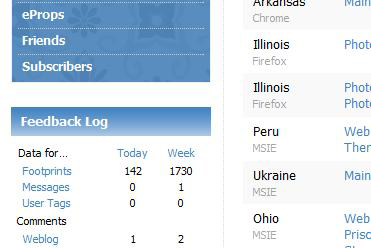Your cart is currently empty!

Can You Compare Stats?
When I first started using Google Analytics, I had been using another form of web stats for a while. Google showed about a tenth as many visits as my old stats counter, so I was of course mystified and frustrated. I was an in-house SEO in those days, and I didn’t like to report lower numbers to my boss, but I wanted the additional data Google Analytics gave me.
I spent a number of fruitless hours attempting to figure out how I could convert one set of stats into the other, or line them up, or in some other way make them fit well enough that I could compare them in a useful way.
Note that I said they were fruitless hours. Each analytics program — and there are lots — collects and reports data differently. They can’t be compared usefully.
Which one you use depends on a number of factors, including the goals you have for your website, who you report to, and whether you’re the only one watching those stats. Here are some things to consider, though:
- What are they counting? We met with a prospective client yesterday who was talking about “hits.” A “hit” is a request to the server, so it can be anything from a picture opening to a style sheet being consulted to a web page being visited. Another program counts “clicks,” which is the visitor’s action of clicking on a link. Neither of these is the same as counting visitors.
- How are they reporting? Some programs (including Google Analytics) show visits in real time, while others show a summary of the previous day. Some will calculate trends for you, while others only give raw data for you to analyze yourself. Some use line graphs or bar graphs, and others just give you lists. Even if two stat programs happen to count the same things, you may have to do some conversion and analysis to compare them.
So what’s the solution? The simplest plan is to pick one and stick with it. However a given program tracks conversions, an increase in the percentage of conversions will always be good news. However it counts visits, a decrease in visits will be a warning sign. If you look at different types of analytics, you may not see the changes or surprises that would make the most difference for you.
I like Google Analytics best, and I use it whenever I have that option. Over the years, as I’ve worked with the GA stats of hundreds of sites, I’ve learned enough to see what’s surprising and to recognize patterns, and that’s quite valuable. We install GA for all our clients.
But I also use other stats sometimes.They may count other things and report in other ways which can be useful. I just don’t try to compare them with one another. You’ll end up with a false idea of the trends at your site if you do that.
Tags:

Leave a Reply